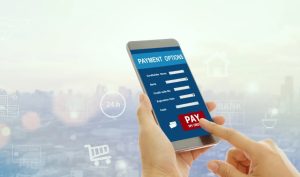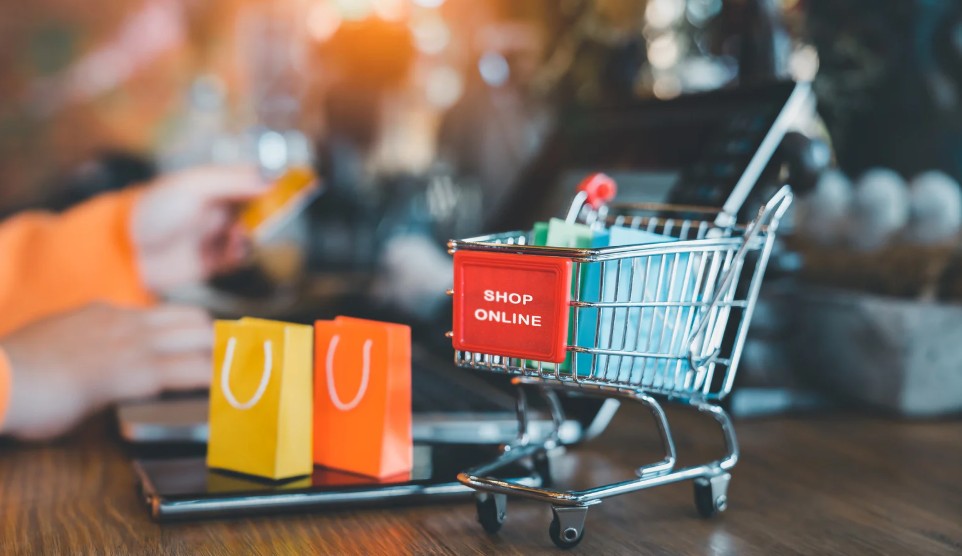What Are Ecommerce Payments?
Ecommerce payments happen when customers pay for goods and services online. These payments are real time, and can use various methods like cards, digital wallets, pay-by-bank, and buy now, pay later (BNPL) options.
As online shopping grows, businesses need fast, secure, and cost-effective payment solutions. The right ecommerce payments setup can improve checkout conversions, reduce fraud, and lower transaction costs.
How Ecommerce Payments Work?

There are multiple steps in e-commerce payments. Here’s how they typically work:
- Customer initiates a payment by purchasing something on the merchant’s website.
- Customer selects a payment method. They choose from available options like cards, pay-by-bank, or digital wallets.
- Payment information is processed. The transaction details are encrypted and sent to the payment provider for authorisation.
- Funds are verified. The customer’s bank or payment service confirms if they have enough balance or credit.
- Approval and settlement. If approved, the transaction is completed, and funds are transferred to the merchant.
This process happens in seconds, ensuring a smooth checkout experience. Some methods, like pay-by-bank account to account (A2A) payments, offer even faster settlements as they don’t involve card networks.
Types of Ecommerce Payment Methods

Businesses can offer different payment options based on customer preferences and industry needs. Here are the most common types:
1. Digital Wallets and Mobile Payments
There are the most widely used e-commerce payments. Wallets store card details securely and allow quick one-click checkouts.
2. Credit and Debit Card Payments
Cards are losing momentum to wallets, yet they still remain popular. They are the “habitual” payment method, but fees can be high for businesses and checkout clunky for customers.
3. Account-to-Account (A2A) Payments
A2A payment methods such as open banking and pay-by-bank move money directly between bank accounts, bypassing card networks.
They reduce transaction fees and speed up fund settlements. Plus, they offer superior UX for consumers as they authorise payments directly in their trusted bank’s interface.
4. Buy Now, Pay Later (BNPL)
BNPL services let customers split payments into smaller installments, making expensive purchases more accessible. They are gaining momentum in e-commerce.
5. Cryptocurrency Payments
Some ecommerce businesses accept crypto payments, providing alternative payment options for tech-savvy customers.
Benefits of Optimising Ecommerce Payments

A seamless ecommerce payments setup benefits both businesses and customers. Here’s why it matters:
- Higher Conversion Rates: A slow or complicated checkout process leads to cart abandonment. Fast and user-friendly payments reduce friction and improve conversions.
- Lower Transaction Fees: Some payment methods, like A2A payments, reduce processing costs compared to traditional card payments. Businesses can save significantly on fees.
- Improved Security: Strong authentication methods protect both customers and businesses from fraud and data breaches. Secure payment options build trust and encourage repeat purchases.
- Global Reach: Offering multiple ecommerce payments options and currencies allows businesses to reach international customers and accept different currencies.
Future of Ecommerce Payments
The way people pay online is changing fast. New technology, tighter regulations, and shifting customer habits are reshaping eCommerce payments every day.
More businesses are turning to account-to-account (A2A) open banking payments for faster, cheaper transactions. In the UK, open banking transaction volumes grew from 320,000 in 2018 to 224 million in 2024.
The global open banking market is set to grow from $25.6 billion in 2023 to $113.3 billion by 2032. By cutting out card fees and speeding up settlements, more retailers are adding A2A payments to their checkout options.
AI-powered fraud prevention is becoming essential. As online payments grow, so do fraud risks. Businesses are leveraging AI to detect suspicious activity in real-time.
Smarter fraud prevention means fewer losses and a more secure shopping experience for customers.
Digital wallets continue their expansion. With mobile-first consumers leading the charge, wallets like Apple Pay and Google Pay are becoming a go-to payment method. Adoption is surging, especially in regions where mobile banking is the norm.
Regulation is changing. Governments are introducing new rules to protect and improve payments, for example, with PSD3 and IPR in Europe.
Retailers must stay ahead of regulatory changes to ensure seamless, secure transactions while avoiding penalties.
Conclusion
Ecommerce payments are at the heart of online shopping. The right mix of payment options helps businesses boost sales, keep transactions secure, and cut costs.
As technology evolves, staying on top of new payment trends is key to staying competitive. It’s not just about getting paid – it’s about making checkout seamless and secure so customers keep coming back.
Author Profile

- Blogger by Passion | Contributor to many Business Blogs in the United Kingdom | Fascinated to Write Blogs in Business & Startup Niches |
Latest entries
 BusinessDecember 12, 2025The Smart SME’s Guide to Future-Proofing Physical Assets
BusinessDecember 12, 2025The Smart SME’s Guide to Future-Proofing Physical Assets FinanceOctober 28, 2025How to Measure the ROI of Your Promotional Product Campaigns?
FinanceOctober 28, 2025How to Measure the ROI of Your Promotional Product Campaigns? Home & LivingOctober 4, 2025Moving Forward When Leicester Family Dynamics Change
Home & LivingOctober 4, 2025Moving Forward When Leicester Family Dynamics Change BusinessSeptember 22, 2025Always-On SMEs: The UK Business Owner’s Guide to Seamless Travel Data for Sales Trips, Trade Fairs & Remote Teams
BusinessSeptember 22, 2025Always-On SMEs: The UK Business Owner’s Guide to Seamless Travel Data for Sales Trips, Trade Fairs & Remote Teams





